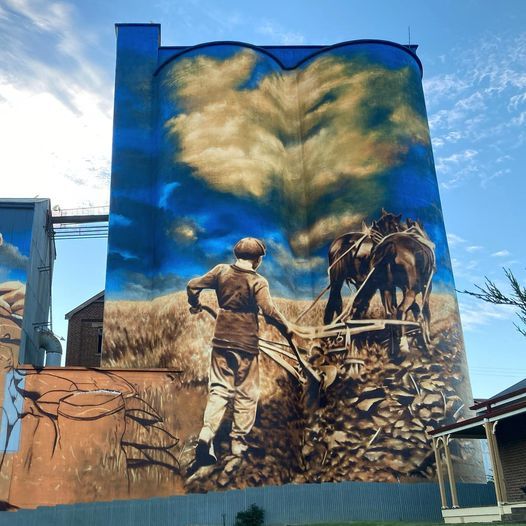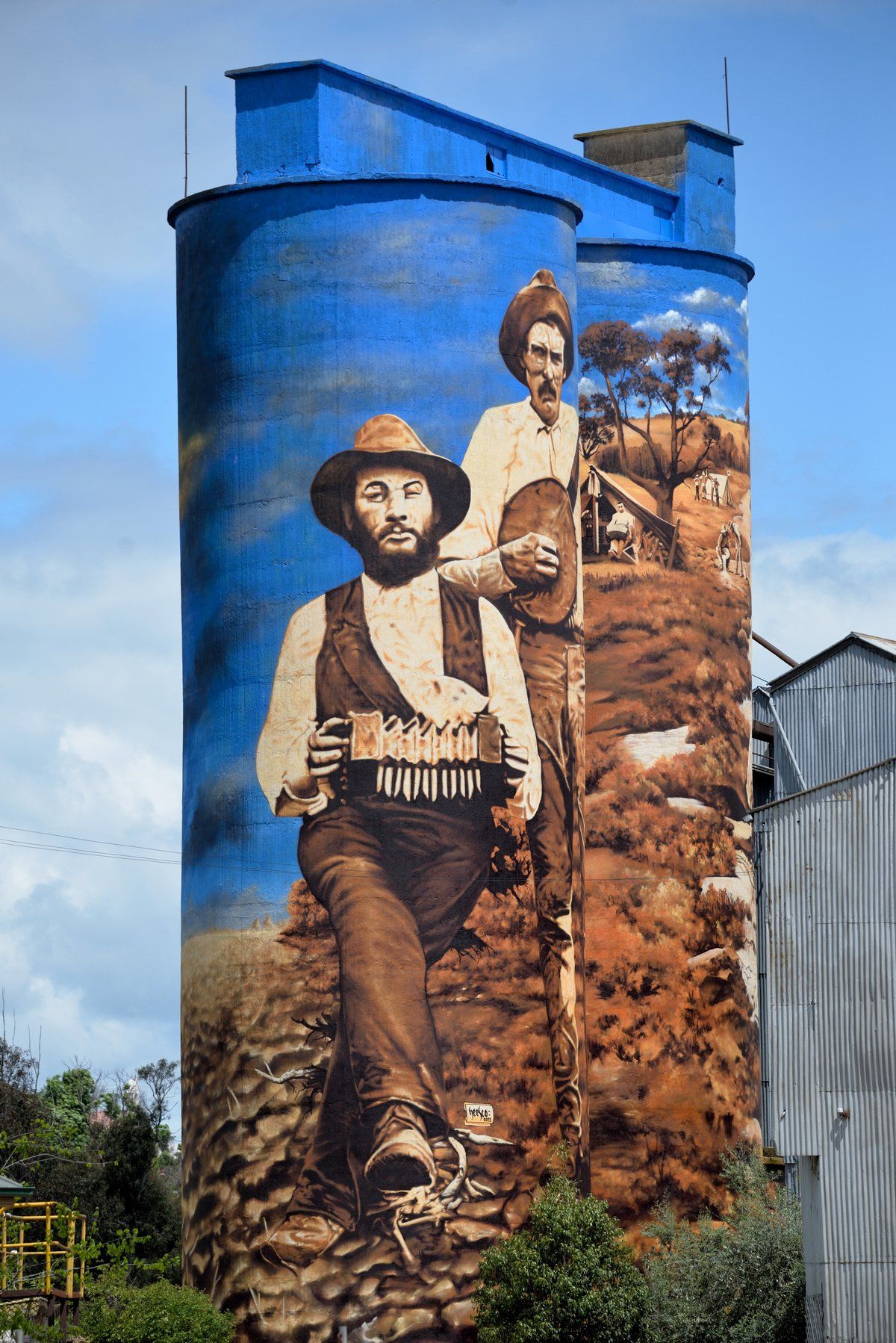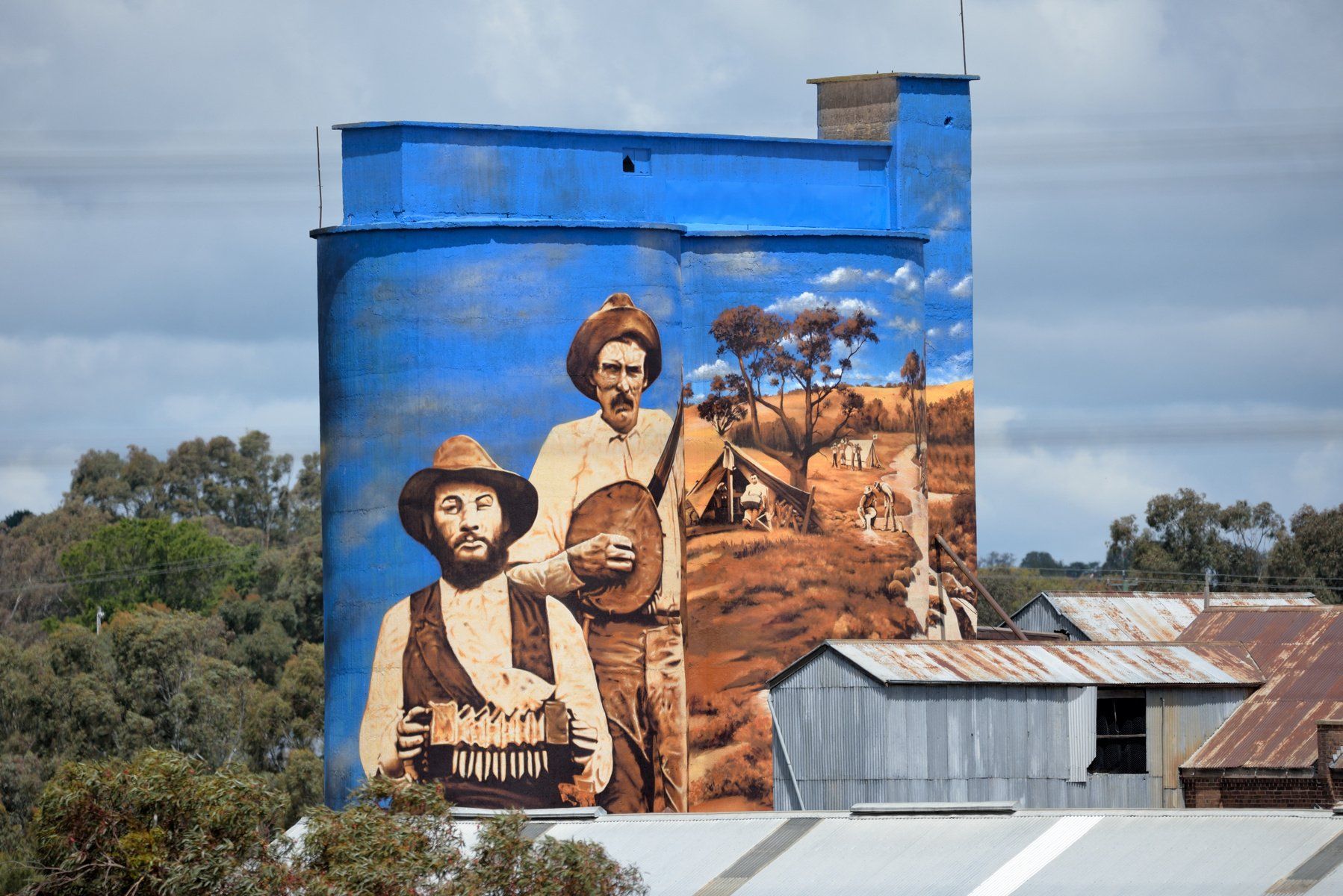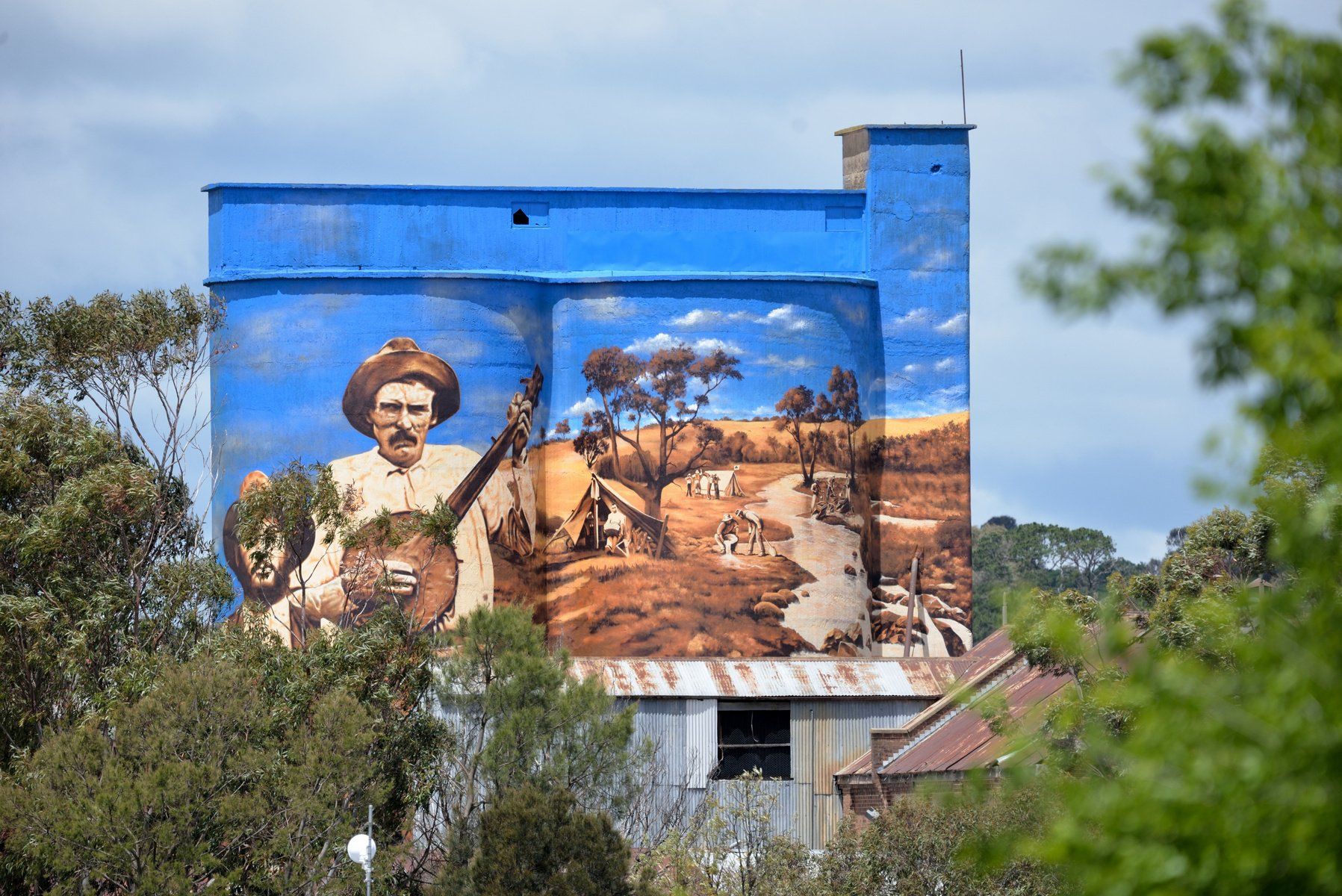
Photo by: ASAT
Murrumburrah Mill Silo Art - New South Wales
Artist: Heesco
Location: Neill Street, Harden, NSW
Privately owned by: Greg and Robyn Medway
Stage One
The Murrumburrah Mills project was delayed in late 2020 due to COVID-19 restrictions, but Harden-Murrumburrah Regional Development Corporation (HRDC) finally got the green light, with Melbourne-based Mongolian street artist Heesco Khosnaran beginning the artwork in January 2021 and completing it by the end of February 2021.
Eastern side Artworks
The eastern side artworks is a mural about rural Australia, late 19th century, early 20th century.
The young boy ploughing the soil using a manual plough drawn by two horses, reflects the involvement of children in the work carried out on family farms.
The female workers indicate that some women were employed in the manufacture of flour, particularly retail packaging, although the vast majority of workers at the flour mill were males.
The flour produced as on the mural, was promoted as “ALLSOPPS Silver Spray flour” and won over 25 awards, the flour was exported to Britain and Egypt. It is estimated in the 158 years of a flour mill at Murrumburrah, over 2200 people were employed and approx 127000 tonnes of flour produced (est) including associated products.
The mill worker depicted carrying a bag of wheat and standing on a “mountain of wheat bags” reflects the high portion of manual work that was carried out at the flour mill, by many hard working strong men. One such employee was Nick Rawlin, who holds the record for the most bags of wheat carried in a single day, 3000 bags! Bags of wheat generally weighed 3 bushels or approx 80kgs!
Stage Two
Stage two of the Murrumburrah-Harden Mills was once again painted by Heesco Khosnaran and photographed by photographer Keith Ward, with working being completed in October 2022. The new artwork makes this silo one of only a few in Australia painted all the way around, creating windows of stories told by the brush stokes of Heesco's hand.
Western side Artworks
The western side artworks reflects on the gold rush period in the Hilltops region 1858-62
The two large “bushies” playing musical instruments indicates how the gold prospectors entertained themselves, one is playing a concertina, the other a stringed banjo without frets.
Most of these instruments came from Europe and were likely brought to the gold fields by the prospectors from Europe.
The gold discovered in the region was based on “sluicing” and gold panning. ”Sluicing” is a process of running water down a slope into sluice boxes where the gold is trapped.
Gold panning as depicted in the larger mural, reflects a gold prospector using a pan to identify
gold particles at the base of the pan. In the background of the “gold panner” mural, are campsites with gold prospectors busy carrying out work on sites around running creeks, which is where the majority of gold was discovered in the Hilltops region.
History of the Murrumburrah Mills
The land for the Mill was purchased in 1858 by Miles Murphy and the flour mill was completed in 1865. In 1868 Thomas Allsopp purchased the mill and introduced many new concepts into the production of milling.
In 1919, a major fire occurred on site, and from 1919-1922 the flour mill complex was rebuilt, including the building of the concrete twin silos within the complex. The new system included the train carriage of raw product to the site, off the Sydney-Melbourne Train line system directly to the twin silos for storage. An electrical auger system was implemented to carry the product up into the twin silos, all quite “revolutionary” at the time. In 1991 the silos were mothballed, and storage discontinued.
Information courtesy of Greg Medway










